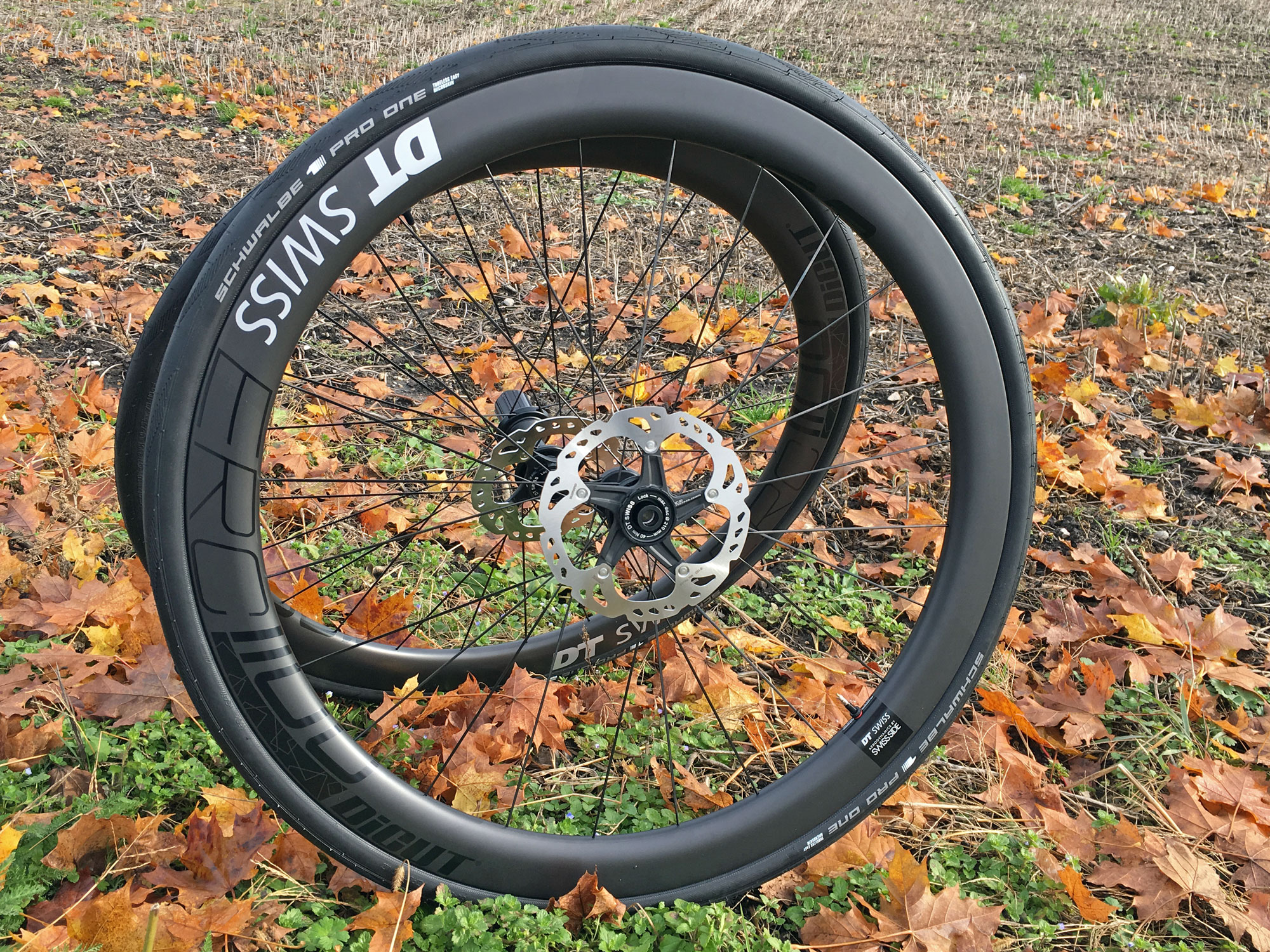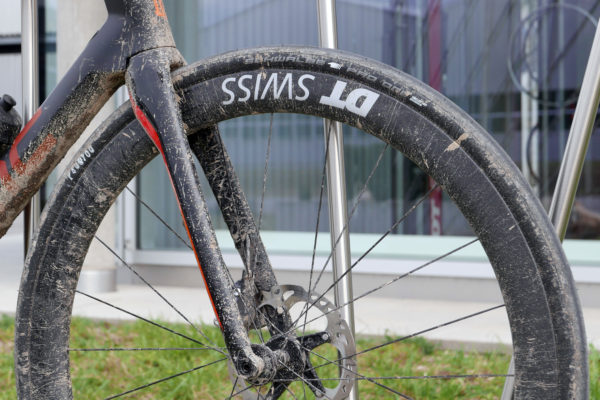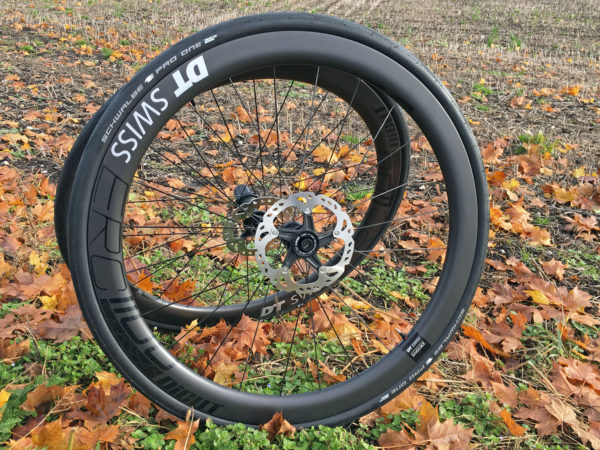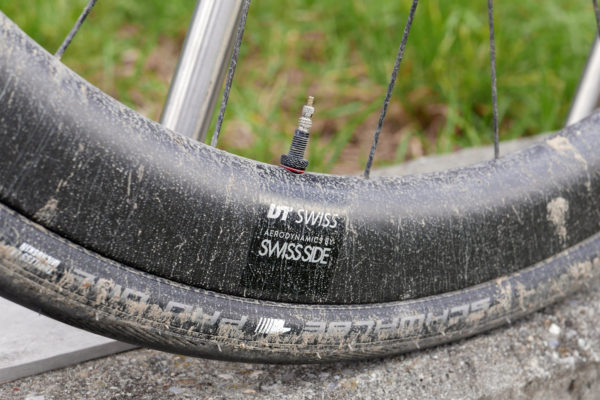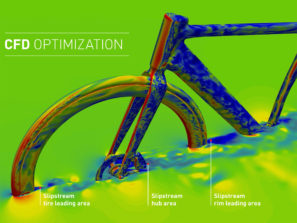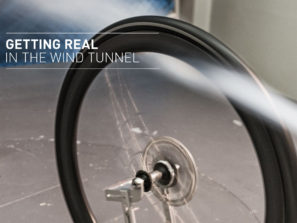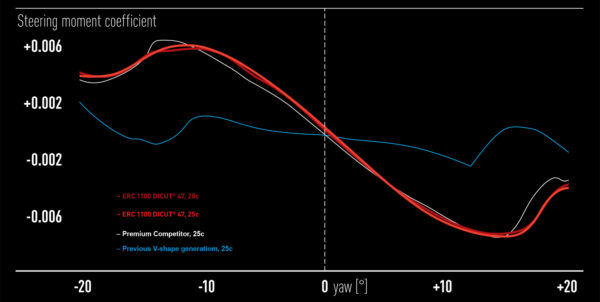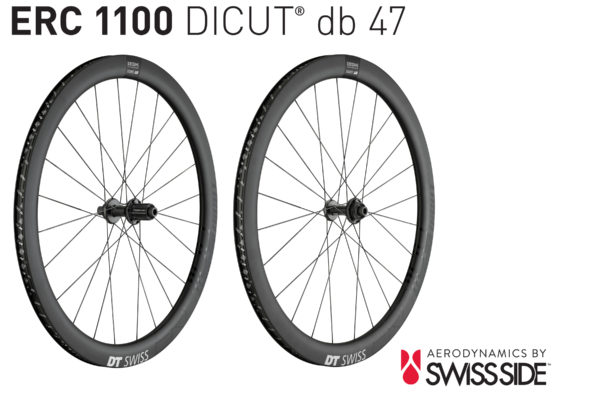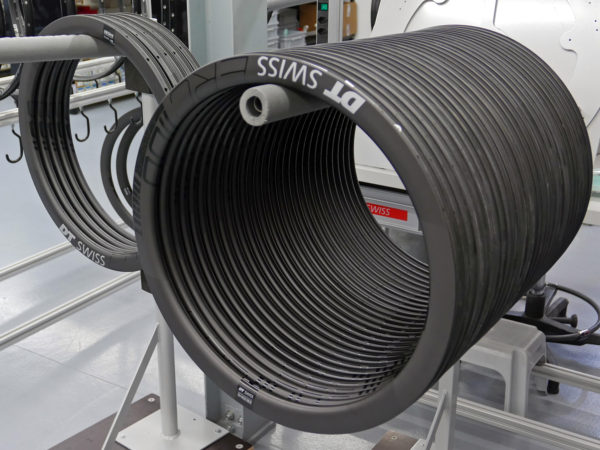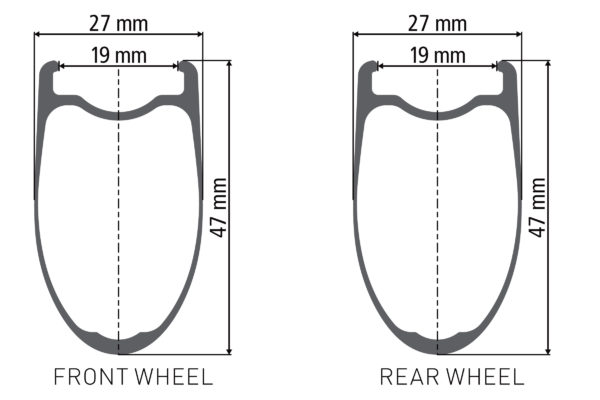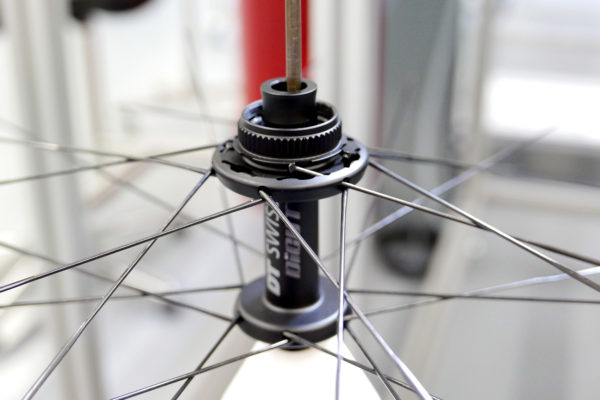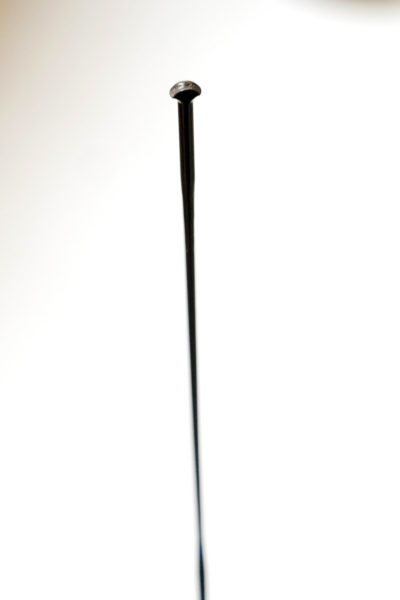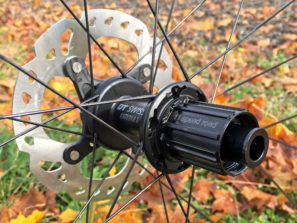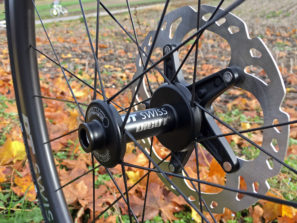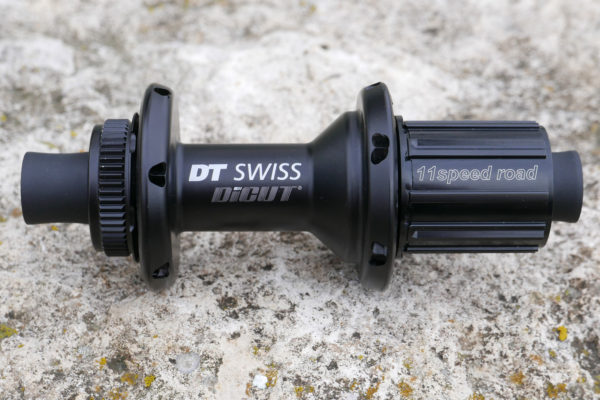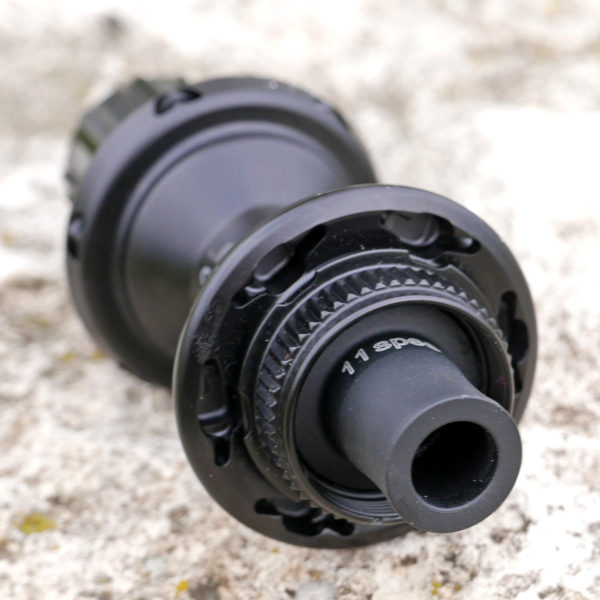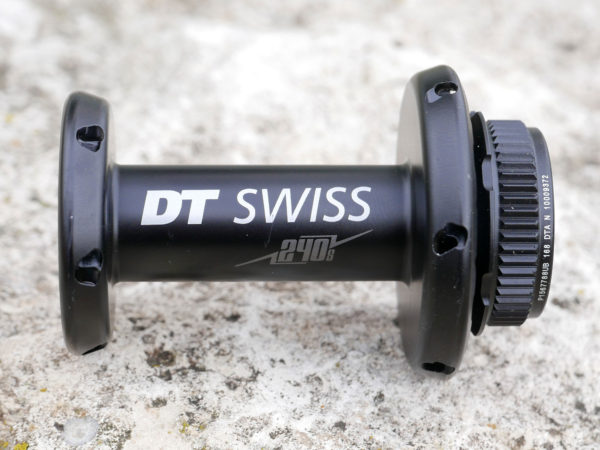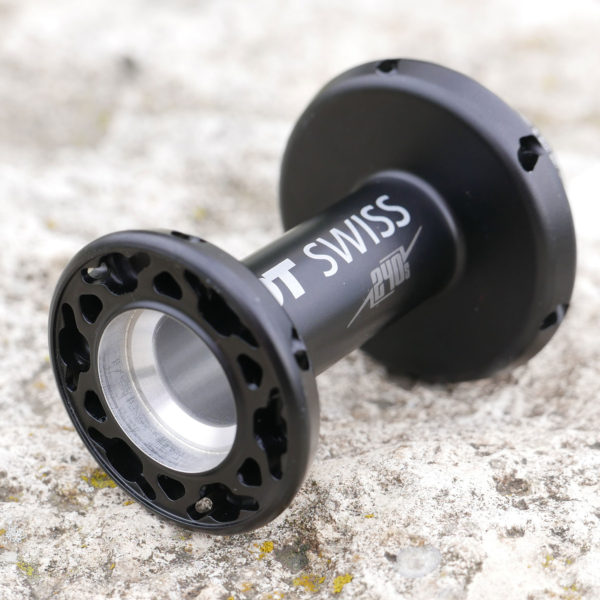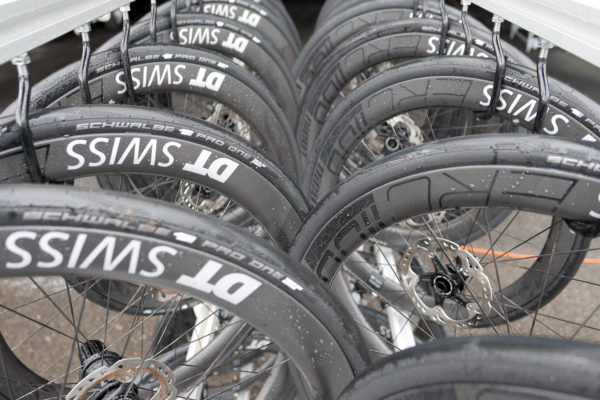Last week we visited DT Swiss in their Biel/Bienne, Switzerland global headquarters to get an up close look at their newest road wheels. The disc brake-only ERC 1100s are designed to redefine the top of the growing Endurance Road segment for everything from long granfondo rides and races to all of the dirt and gravel back roads your own neighborhood has to offer. Said to be the first of many in their major road wheel makeover for 2018, the new ERC 1100 wheels grow wider than any of the current DT road catalog. They also mark the first development partnership with aero specialists Swiss Side to bring an entirely new perspective to aerodynamic wheels, and one that can actually be felt (or rather not felt) out riding in the wind. Everything is new in the wheels from hubs to spokes to the rims, and offers hints of what more is to come. Check out the details, price tag, and how surprisingly soon they will be available…
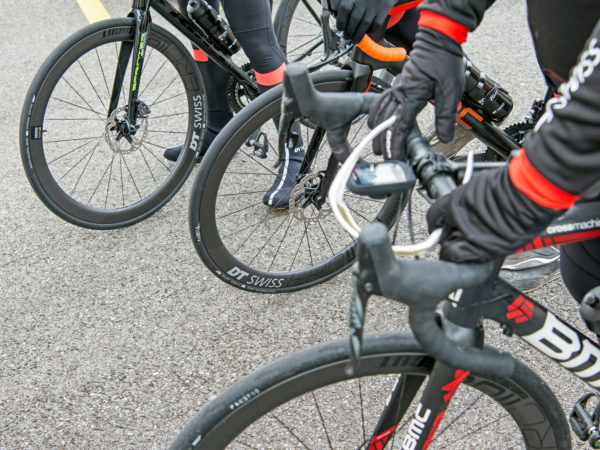
We visited DT Swiss to get a first hand look at the new road line-up that they have been working on. DT is making a pretty big claim by calling their model year ’18 road wheel range a #RoadRevolution. But with some of their top-end road line slow to make the shift to wider internal rim widths and more optimized aero sections, the new ERC 1100 offers a glimpse of what is about to change for DT.
To be fair DT Swiss has been pretty ahead of the curve on several fronts for some time. Based a lot on their modular hub design giving them flexibility, DT were one of the first of the big companies to offer disc brake wheels for road and cyclocross, thru-axle compatibility with pretty much every standard, and one of the only companies that makes disc brake road wheels that can interchange between Shimano/SRAM 11 speed cassettes, Campagnolo 11 speed, and SRAM’s XD driver (all tool free, too.) Their other big thing has been road tubeless. They don’t brag much, but literally every road (and mountain) bike wheel that DT Swiss produces is tubeless ready, and has been for some time. That tech all carries over in the new wheels, but everything gets turned up a notch with this fresh look at aerodynamics.
The key feature of this new premium wheelset though, is probably that it is targeted not at the pro or weight-weenie racer but at the real amateur road rider who is out putting in the kilometers and happy with the rebirth of road riding on any surface you can find. Don’t call it a gravel wheel (although it seems like it can really handle that too) but rather an Endurance wheel, making it the kind of all-around wheelset optimized for everyday riding out on real roads; not something designed on paper for some perfect road or wind conditions, or even designed for unrealistically high pro-level average riding speeds.
Looking at the design of the complete wheelset (and a complete bike+rider package) from this real world approach is what led DT Swiss to most of the innovations that show up in the new ERC 1100 wheelset.
Swiss Side
Endurance riding to DT Swiss means spending long hours in the saddle, and often times spending good portions of that either out in the wind solo or leading a small group of riders. They saw that as a reason to think about how to optimize the ride of the wheels, not only from a performance, durability and weight perspective, but also with regards to aerodynamics. And DT recognized that they are really more of spoke, hub, then wheel building specialists (that is where they got their start, respectively), so they reached out to the best aero experts they could find – Swiss Side, who have been establishing themselves in cycling much as they did in F1 motorsports racing.
Swiss Side brings a technical aero development perspective that is rather unique in cycling, combining several types of analysis and real world data collection, with the goal from F1 of doing whatever it takes to deliver the fastest overall system in the end. They start with CFD in the computer, before transitioning to the wind tunnel. But in what is still rather uncommon in cycling, they then transition to a lot of real world riding, collecting data on the fly to analyze more of the complete rider and bike system, rather than focusing exclusively on the wheel or even wheel+bike combo.
The result of the Swiss Side development collaboration is what DT Swiss is calling Aero+. That means not that it is designed for plus sized tires (DT thinks the best aerodynamics of the wheels are with 25-28mm tires) but rather that you have to look at aerodynamics from more than one perspective. Their take on it is that it’s a balance of low drag numbers, stable & comfortable handling, and overall efficiency.
That means that as much as they were trying to lower the amount of wind resistance of the wheels, there were other key elements that affect how fast the wheel carries you. The biggest innovation that came out of the development was the importance of stable aerodynamics. While many wheels perform well directly into the wind, or even sailing into cross winds, every wheel comes to a point in cross winds where the wheel stalls. And that transition from when air smoothly moving against the wheels to it becoming turbulent is the unsettling feeling you get in the handlebars where the wind goes from gently pushing your entire body to the side to the bar snapping back quickly in your hands.
The key to stable aerodynamics then is a smooth transition from the wing-like section of the rim being pushed sideways by the wind to the point where the air rushing over the rim breaks apart and becomes bumpy. You can see on either end of the graph above that abrupt transition from sailing:stalling that occurs both in the modern crop of performance aero wheels (white) and the traditional V-shaped aero wheels (blue). That jump is the same jump that you feel in the handlebar and what makes you tense up when wind gusts pop up.
DT Swiss and Swiss Side worked together on their new Aero+ ERC 1100 wheel to ensure that transition happens more smoothly (red curves), and this result in a dramatic decrease of that scary feeling you get riding in windy conditions.
The rider makes up 75% of the overall system drag, so looking at the complete bike and rider perspective this has a big input in overall aerodynamic efficiency. Swiss Side did a lot of real world data collection and realized that every time that one of the jarring wind gusts would hit a wheel, the rider would tense up and both sit up higher a bit and ease off on the pedals. They say that riders tended to sit up between 15-20mm with each occurrence and reduce their power output by tens of watts as well. As a general rule Swiss Side said that every millimeter that a rider sits up they lose about 1W of power.
In their on-the-road testing they saw this tensing happen 2 or 3 times every minute over the course of hours long rides, with the differences adding up to minutes lost. So the result was that by eliminating this jarring movement at the handlebars they could improve overall aerodynamic efficiency just by allowing the rider to comfortably stay in their more aero position on the bike longer.
Rims
The UD carbon rim shape was developed with a 19mm internal width to deliver the best performance with either a 25mm or 28mm tire. These look to be the tire sizes getting the most development right now, and provide a balance of ideal aero benefit with the 25mm tire above 35km/h and lowest rolling resistance with the 28mm tire below 35km/h.
The wider rim bed is key to proper support for wider tires, so they don’t just balloon out and become unstable but also yields a more aero interaction between tire & rim. With the taller, stable tire profile you also get the overall benefit of fewer pinch flats, the ability to run lower pressures, and then the result of lower rolling resistance and a wider, more grippy contact patch. And of course tubeless. DT Swiss is all in with road tubeless, and each of those benefits is improved by getting rid on the inner tube.
This development process also spent a good bit of effort balancing the benefits of aerodynamics vs. weight to find the best all purpose depth. Swiss Side’s data intensive approach looked at a premier granfondo event – the 276km/171mi long Alpenbrevet in Switzerland with more than 7000m/23,000ft of climbing – to see the benefits of shedding weight or improving aerodynamics. Keeping the same 80kg/176lb rider, same 200W rider output and average overall bike setup, the move to a more aero 1700g wheelset vs a light 1200g set dropped about 5 minutes off of the total ride time. That isn’t really very much difference in time over a more than 12 hour long race, but the previous thought had been that a lightweight wheel was going to be faster for such mountainous riding.
Then of course DT Swiss’ new ERC 1100 wheels are even lighter than that. Coming in at a claimed 1530g for the set (710g front, 820g rear), they balance both light weight and aerodynamics with their 47mm deep, 27mm wide profile. As Swiss Side described their relatively flat outer section, bulged middle, and wide blunt curve are what delivered both the smooth transition to stall and ideal airflow from rim to tire.
Spokes
One of things I found most interesting about the ERC 1100 was its new spoke. For the first time DT is making, just for this wheel, what they call the 2/3 Aerolite spoke. It combines the benefits of a butted spoke and an aero spoke into one. The first 1/3 coming out of the straight-pull hub uses DT’s forged butting to make a strong spoke, but with the little bit of extra give & comfort that comes from a wheel built with butted spokes. Then the remaining 2/3 of the spoke out towards the rim that is spinning faster, far out in the wind gets forged aero blading that decreases drag and still results in a strong wheel build. The result of a simple combination of DT’s two premium spoke technologies is a spoke that builds strong aero wheels, without the harsh stiff ride that can sometimes be the result of bladed spokes and deep carbon rims.
Hubs
High performance hubs are one of DT Swiss’s biggest selling points as well. The hub itself was shown to make up 15% of the total drag of the wheel, so DT redesigned the hub shells as well, making them as small as possible. Internal technology is the same as their 240s, so you still get high performing (and standard sized) bearings, good seals, and reliable freehub engagement.
Both front and rear Dicut hubs are designed around the same modular, tool free end cap system as the DT Swiss’ typical 240s hub. That means easy swapping from QR to thru-axle. The hubs also stick with 24 spoke, two-cross lacing, and a Centerlock brake interface which gives you the option to use any of the rotors available on the market. Being Dicut hubs means that the hubs use DT Swiss’ special straight-pull spokes with the unique T-head which you can see in the spoke pic above. The hub flange get slots angled and cut just for these spokes which makes them kind of proprietary (it’s unclear if a round head straight-pull spoke could be used as a replacement in a pinch) but designed for optimally stress on spoke & hub.
The rear hub uses the same 10° 36T ratchet freehub engagement that DT has built their reputation on with both reliable performance and durability. That also means that the internals are easy to pull apart and service without tools, and that you can swap freehubs tool-free for any of the current industry standard cassette options.
To keep everything small they have stuck with a 12mm front thru-axle as being the biggest possible. This seems to be the running disc brake road standard, but you won’t be putting these wheels on some of the ‘cross and gravel bikes like the 3T Exploro that still use the 15mm mountain bike standard front thru-axle.
The wheels also introduce a new Plug-In RWS axle system we spied earlier and look at more in depth later. It uses a single lever for both front and rear wheels (or any other 6mm bolt on the bike) that’s detached and put in a pocket to shave off another 1W of aero savings. If you want to keep it on one of the wheels, you can do that too as it offers a pretty solid connection that isn’t likely to bounce off down the road or trail.
At $3,117/2,417€ the new ERC 1100 Dicut db47 wheels are certainly a premium item. But DT Swiss is trying to set a new benchmark for performance in the growing endurance road market where riders are spending long days out on the bike. The new wheels are labelled as a 2018 product but they are going to be available much sooner than that. We’ve seen that DT is already delivering very limited quantities to their key distributors right now. While you might not have much of a shot at getting what amounts to maybe 100 wheelsets worldwide in that first batch, they are trickling out. At the same time DT Swiss tells us that a few big bike makers will have the ERC 1100 wheels as OE from the start of 2017. That means you might have the first real chance in January or February to get ahold of a set as part of a complete bike. We’ll have to wait for official word on who those first OE companies will be. For the rest of us looking to buy just a wheelset, they’re promising March 2017 availability.
Road cycling is making a shift towards more ridability with new amateur and pro road events popping up with more interesting varied terrain, and new road riders are coming to the sport with the idea that they can ride any road surface they find. I definitely get a sense that road exploration is getting a new life, and it’s nice to see some companies taking a broader perspective about how to improve that riding – not just aerodynamics or light weight, but rather a comprehensive look and boosting speed, performance, and comfort on the bike.
Keep an eye out as we share our first impressions riding the wheels in the coming days…
